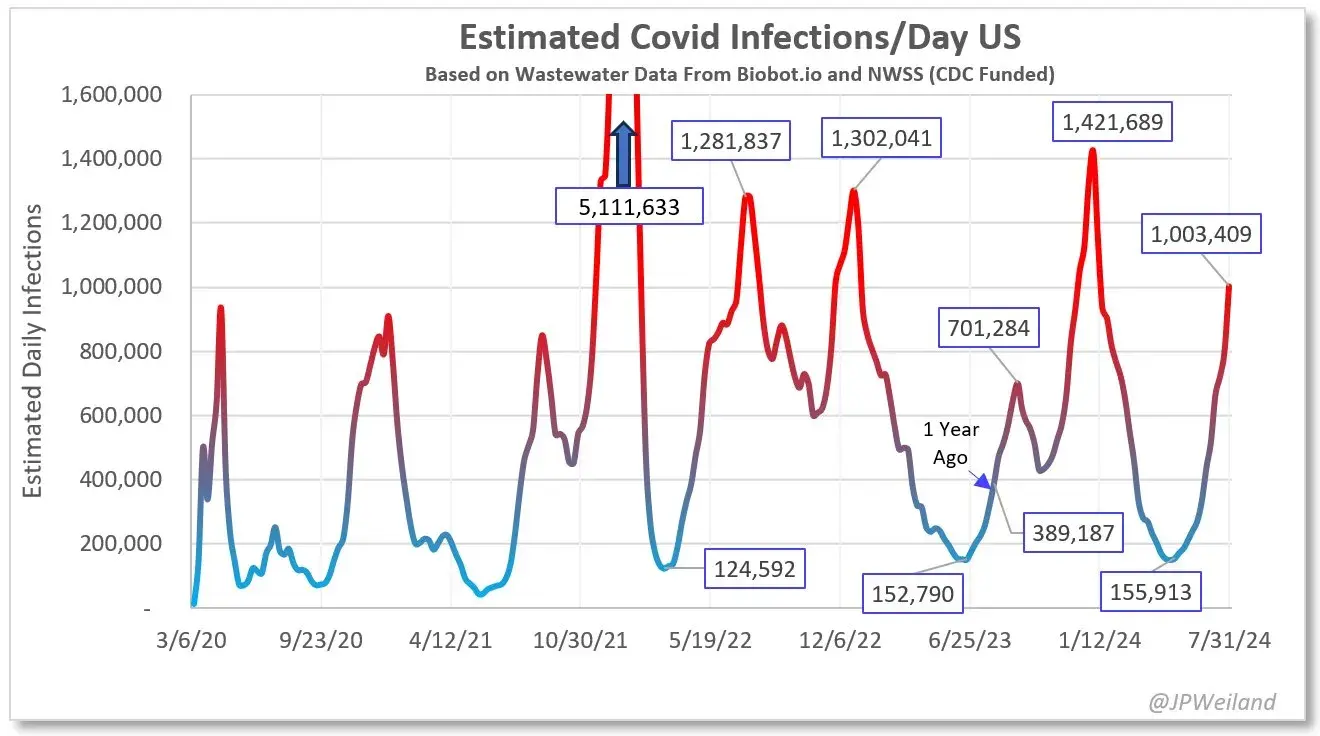
Using wastewater data- the only data that measures the amount of circulating COVID-19 in an era of inaccessible tests and discouraged reporting- infectious disease modeler J.P. Weiland estimates that the US has yet again crossed the million-infections-per-day mark as of August 9, with about 1 in 33 Americans currently infected with COVID-19.
. . .
I’ve written before about how, in November 2021, nearly a year after the debut of the vaccines, Fauci publicly declared that US COVID cases would need to fall “well below 10,000 a day” for us to get a “degree of normality,” and allow us to return to pre-pandemic life. In the nearly three years since, the US has never had a single day with under 10,000 new COVID cases per day; in fact, we have never had a single day with under 100,000 new COVID cases per day.



and how often do people get infections? probably less than two years apart on average
Afaik "immunity" lasts ~months give or take a few, and it's not really immunity, and you can get infected again immediately anyway, and the mutations are highly immun evasive. It's a mess. The vaccines don't prevent you from getting infected, either. They reduce the chance, but it's very limited, not reliable. The key benefit of the vaccines is reducing the risk of long covid.
Apparently there are some hard core sterilizing vaccines being worked on that show some promise and will maybe be able work despite mutations. Fingers crossed.
There's some promising nasal vaccines in animal trials in India iirc, that reduce viral particles in the upper tract 100-fold and in the lower tract 100,000-fold, i.e. completely stopping infection.